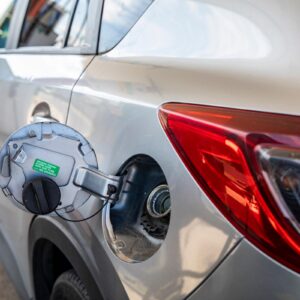Your fuel tank stores the fuel needed by your engine to operate. Most of the time, you’ll make sure that the amount of gas in your tank won’t fall below a certain level. However, there are times when you’ll need to drain it. Here’s a quick overview of how to drain your gas tank
What to Do Before Draining Your Gas Tank
Before draining your gas tank, here are some things that you should keep in mind and prepare:
Disconnect the Negative Battery Terminals
Make safety your priority by disconnecting your negative battery terminals. This will ensure that you’ll have no issue with sparks and fire while you’re trying to drain your battery.
Find a Highly-Ventilated Place
Fuel is flammable, so it’s dangerous to handle it in an enclosed space. Make sure that you keep any flammable materials or electronics that might ignite away from the vehicle.
Prepare Your Storage Containers
It isn’t a bad idea to gather more containers than you actually need. On average, a fuel tank’s capacity can be anywhere between 40 and 60 liters. However, this can vary depending on your vehicle’s year, make, and model.

How to Drain a Gas Tank
There are two ways to drain a fuel tank: siphoning the gas and using the fuel tank drain plug.
Siphoning
If you’re trying to research how to drain gas from a car, you’d surely encounter “siphoning.” This is a method used by seasoned drivers to transfer fuel from one vehicle to another or to a container using a hose and a pump.
You can also purchase a fuel siphon device. It’s a clear hose with a valve in the end. You have put the valve end in the fuel tank and push it back and forth. Pushing it forward will allow the valve to open so that fuel can start to make its way up the clear hose. Pulling it back, on the other hand, will close the valve so that air will be blocked. You’ll have to repeat this procedure until all the air is gone. This will allow the fuel to drain through the hose.
Some experienced drivers siphon gas using their mouth, but this isn’t recommended. You might end up ingesting fuel or inhaling fuel vapors—both are detrimental to your health.
It’s also important to note that modern vehicles can come equipped with an anti-siphon mechanism, making it impossible to suck fuel out of your vehicle.
You can read our complete guide on how to siphon gas to learn more.
Use the Fuel Tank Drain Plug
Some older vehicles come equipped with metal tanks that have drain plugs. If your vehicle has one, you can drain your fuel through the plug.
Here’s how to do it:
Step #1 Grab your safety glasses and gloves, and, find the location of the gas tank drain plug.
Step #2 Chock your front wheels to secure them, and start raising your vehicle using a jack. Make sure that you have enough room to work underneath it.
Step #3 Use jack stands to support your vehicle.
Step #4 Open the gas cap to release pressure before trying to loosen the drain plug.
Step #5 Put a bucket underneath the tank, and use a ratchet and socket to loosen the plug.
Fuel will now flow freely from your tank to the bucket underneath your vehicle.
Step #6 Fuel might spill out of the bucket because of the force of the flow, so make sure you have towels ready to clean it up.
Step #7 You can close your gas cap slightly to slow down the flow of fuel.
Step #8 Don’t forget to replace and tighten the drain plug.
You can also drain your gas tank by disconnecting the fuel supply line from the fuel pump to the engine. Once you turn the key on, fuel will start to push out the line. It’ll run for about 30 seconds. Turn the key off again and then turn it back on. If you’re not sure about anything, you can always contact a trusted mechanic.
You can also drain your gas tank by disconnecting the fuel supply line from the fuel pump to the engine. Once you turn the key on, fuel will start to push out the line.
–Anthony Harlin, ASE Certified Master Automobile Technician

When Is It Necessary to Drain Your Gas Tank?
There can be several reasons why you’ll need to drain your tank. Removing wrong or contaminated fuel, sharing your fuel with another vehicle, fuel tank replacement, and tank cleaning are some of the common reasons why it has to be done.
Correcting a Refueling Mistake
It isn’t uncommon for drivers to pump the wrong type of fuel into their vehicles. For example, new drivers can mistakenly top up with gas instead of diesel.
Using the wrong type of fuel can significantly damage your vehicle, so you’ll have to drain the wrong fuel to correct the error.
Removing Contaminated Fuel
Your fuel can be contaminated due to flooding. Water and debris can get into your fuel tank, and you’ll have no choice but to drain the fuel.
Take note, however, that even if you drain your fuel, there’s no assurance that your vehicle will go back to its optimum condition. You’ll have to get it assessed by a trusted mechanic. You can read this article to know more about what to do with a flooded car.
Fixing a Vehicle That’s Been Left in Storage
You’ll also have to drain your tank if your vehicle was left unused for a long period. If your ride uses unleaded fuel, you’ll have to replace it after 3 to 6 months. If you’re using diesel, you’ll have 6 to 12 months before you’ll have to drain and replace the fuel.
Transferring Fuel From One Vehicle to Another
When you’re stuck in the middle of nowhere with no gas station in sight, it’s a blessing to meet a stranger who’s willing to give you fuel. Before doing anything, make sure that the gas you’re about to put in your vehicle is compatible with your make and model.
Fuel Tank Replacement
Some repairs need to be done with an empty tank. A mechanic might also opt to remove the fuel because of health issues. Remember that fuel vapors, when inhaled in large doses, can be very bad for your health.
Tank Cleaning
This is common for cars that were built in the 1900s. Metal tanks were still used in these times, so it was common for them to rust. Rust can also cause sludge build-up, which can contaminate your fuel. Luckily, modern vehicles usually come with plastic tanks.
Proper Fuel Disposal
Take your old fuel to your local hazardous waste disposal center. Never pour fuel down your sink because it’ll contaminate the sewage system. It’s also a bad idea to dispose of it in rivers and ponds because it’ll pollute the environment. Be a responsible vehicle owner, and dispose of old or unused fuel properly.
Shop For A Replacement Fuel Tank With Just A Few Clicks
You’ll need to drain your fuel tank whenever you need to make necessary repairs. One of these repairs might be replacing an old gas tank or replacing the fuel sending unit or fuel pump. If you need replacement fuel tank components, look no further than CarParts.com.
CarParts.com is a trusted source when it comes to all sorts of vehicle parts. We offer a wide variety of parts for all sorts of makes and models from the most trustworthy aftermarket manufacturers. You can be confident that our parts will fit and function in your vehicle perfectly, as they’re made in high-tech manufacturing facilities to the precise specifications of the original part. All our products come with a warranty period of a minimum of 60 days for your peace of mind.
You can replace fuel-related components without breaking the bank. Check out our selection of competitively-priced fuel pumps, fuel tanks, and fuel sending units here at CarParts.com today!
Any information provided on this Website is for informational purposes only and is not intended to replace consultation with a professional mechanic. The accuracy and timeliness of the information may change from the time of publication.



























